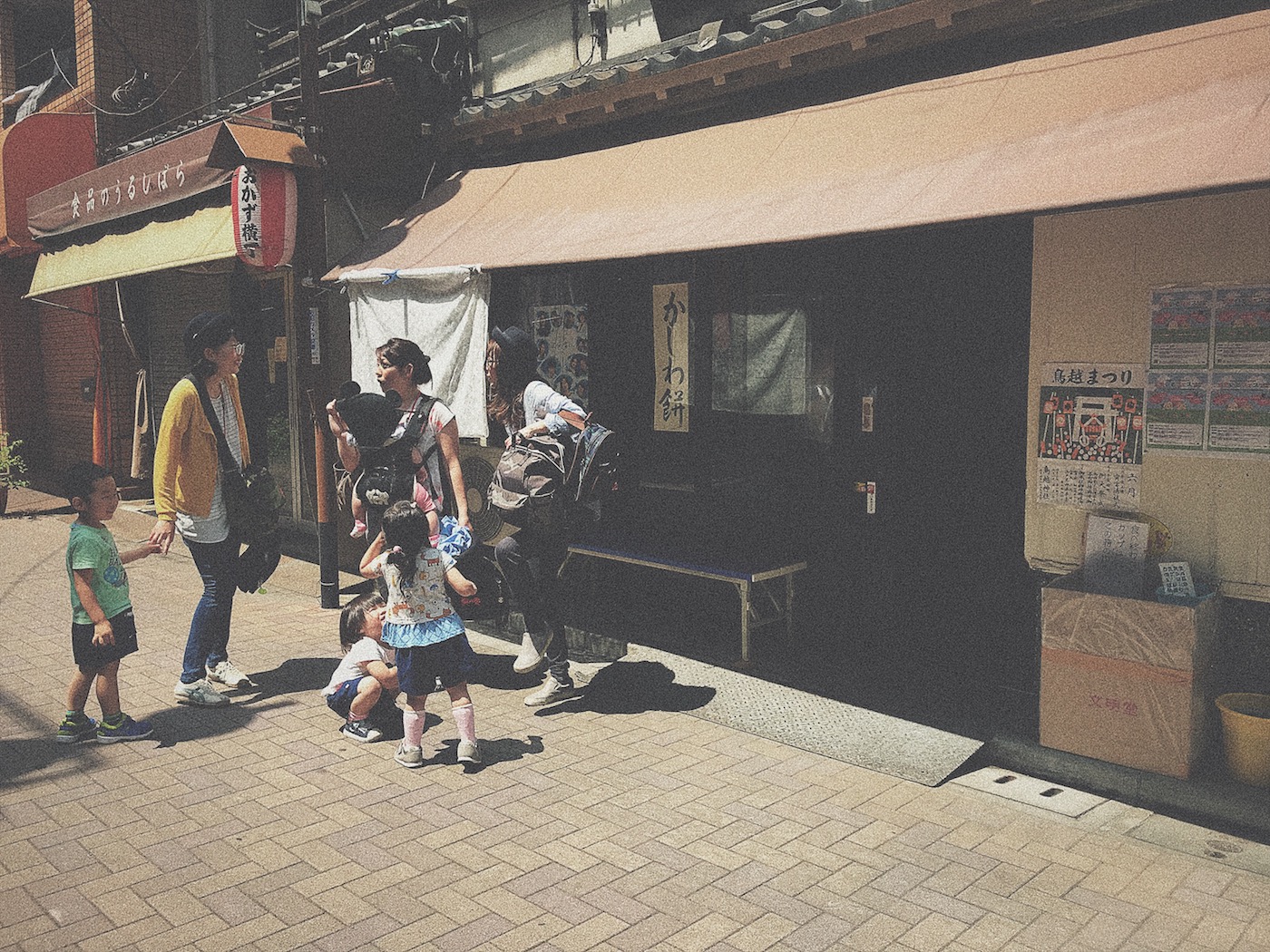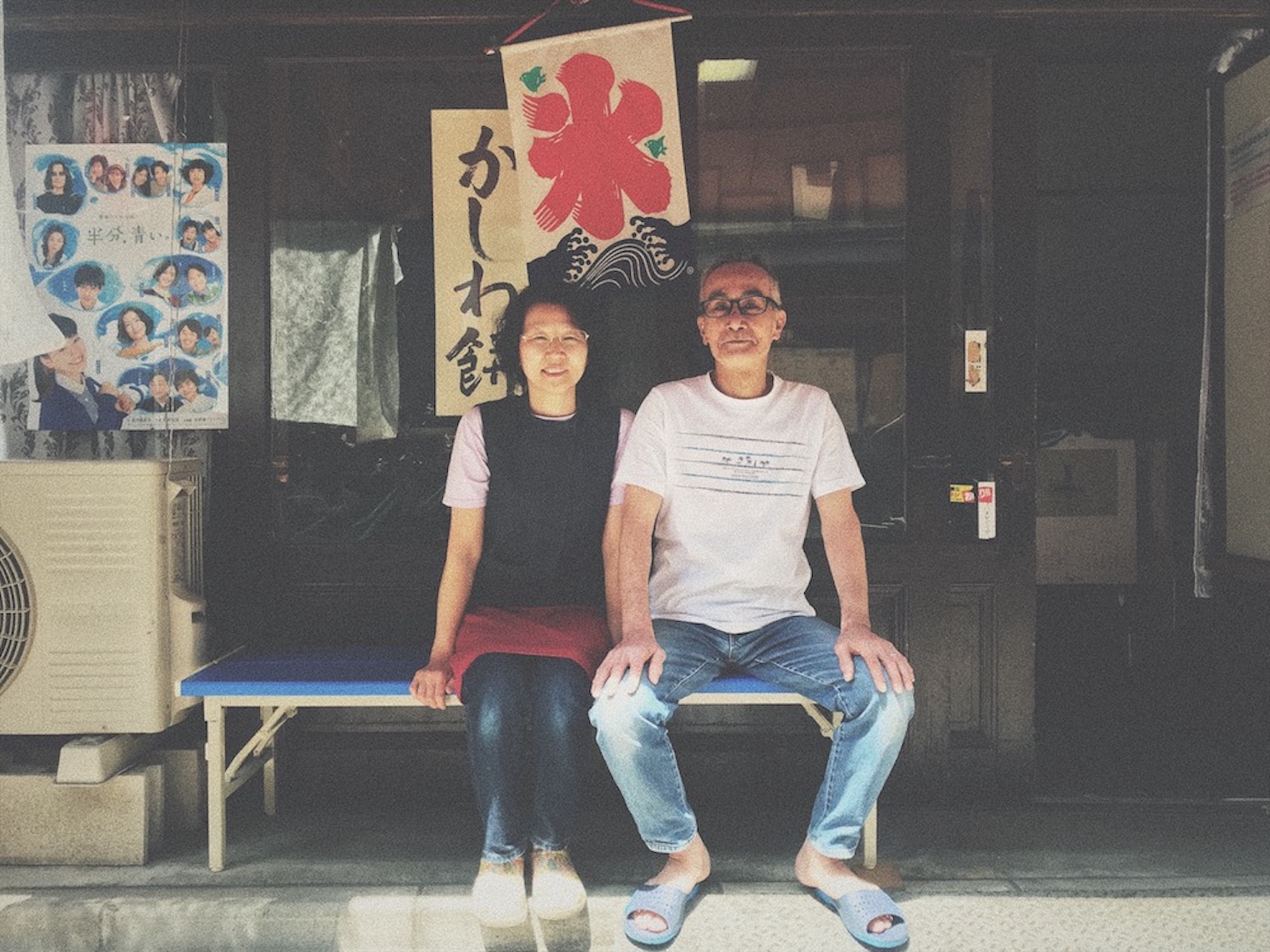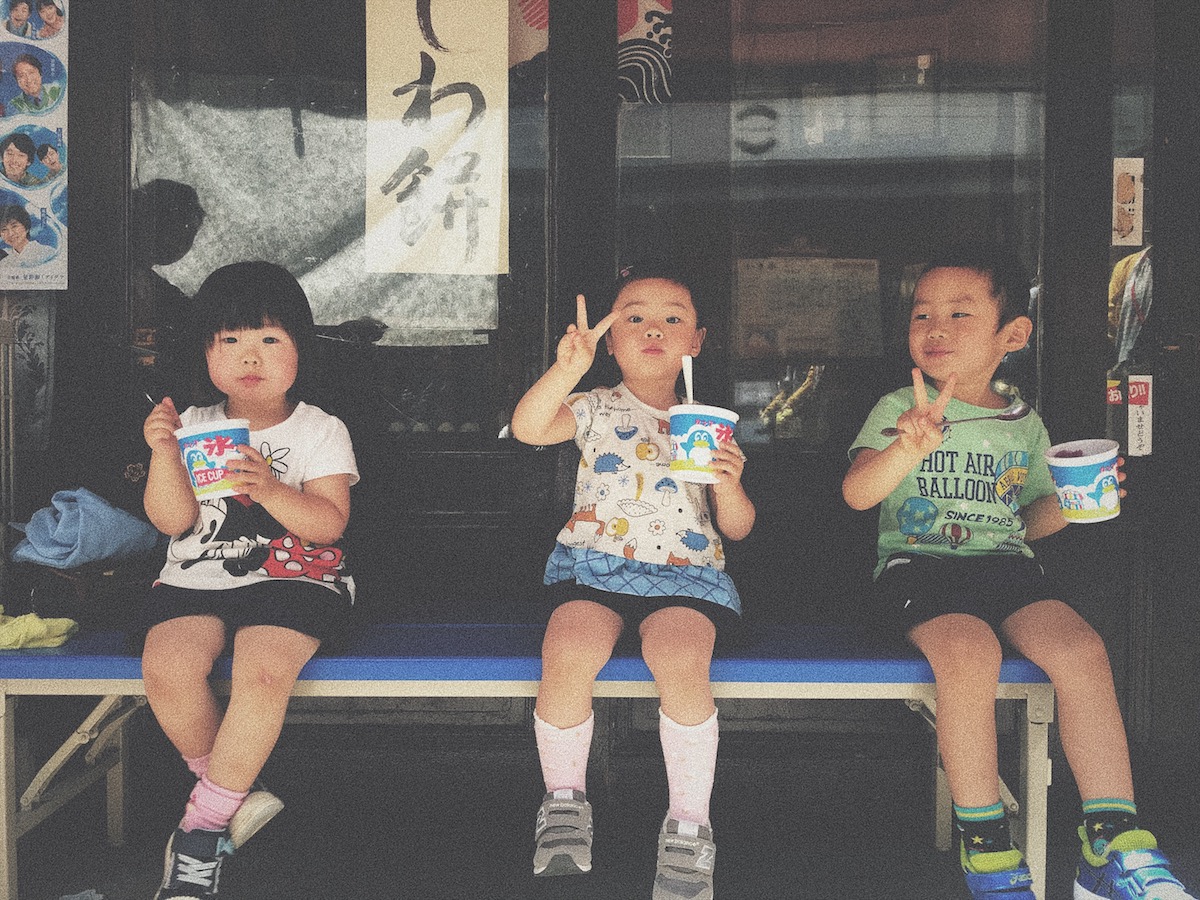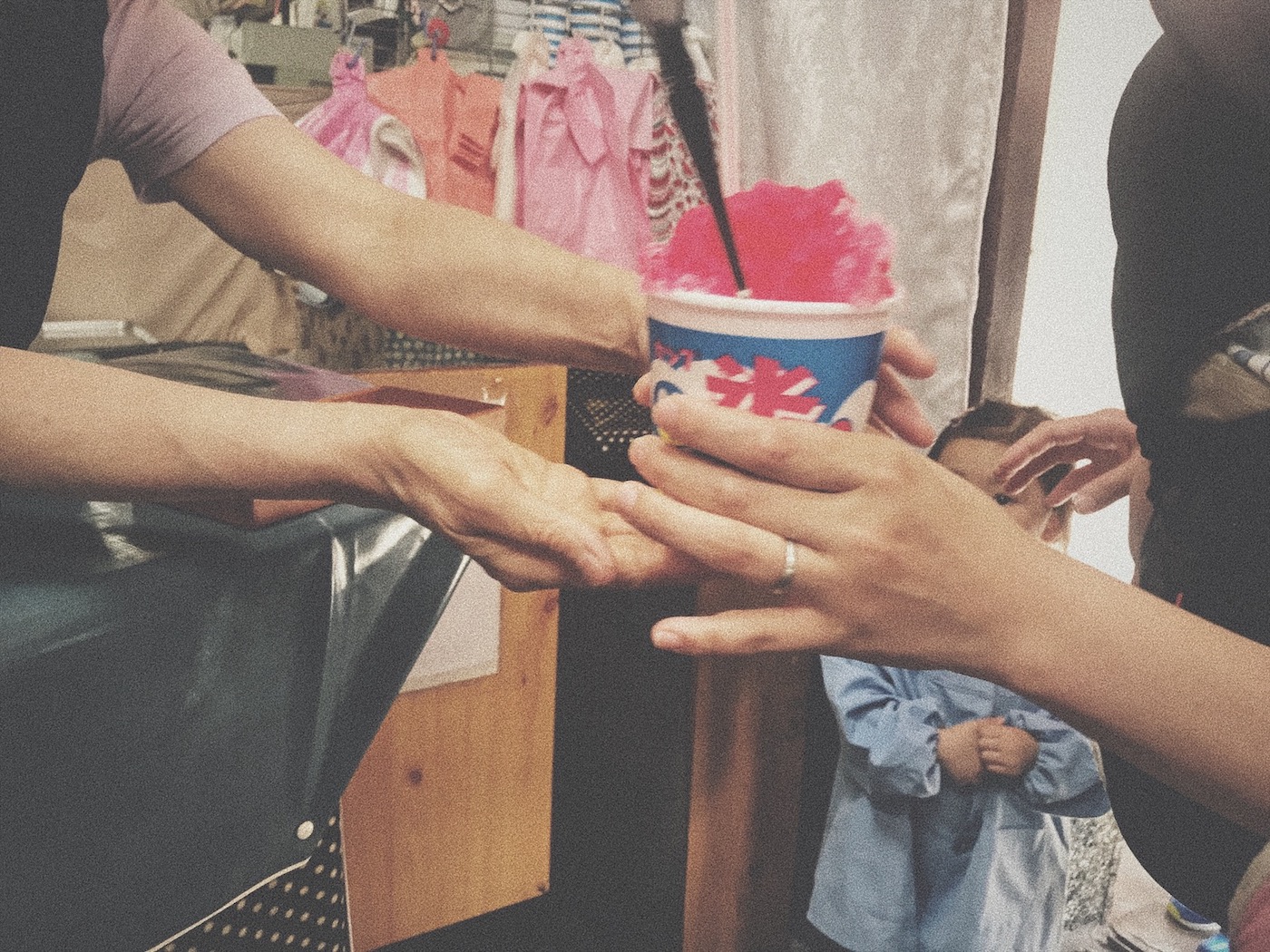時として、一見ありふれた、毎日通っているような場所にこそ、人々が望んでやまない穏やかな魅力と古き時代の優雅さがある。
せわしなく超近代的な大都会東京にも、何十年も変わらない貴重な小さな場所が残っている。老朽化した建物は使い古したパレットを思わせ、窓や扉の木枠のペンキは剥げ、漬物やつまみを売る店が軒を連ねる狭い道をおんぼろ自転車がガタガタと通り抜ける、色あせた街並みが。

Photos by Vaughan
初夏の台東区、5月1日。そんな街並みのひとつ、おかず横丁にある小さな店がかき氷の旗を掲げる。
3人のちびっこが今年初のかき氷を食べにやって来る。「今か今かと待ってたんですよ!」と子どもたちの両親が言う。自転車に乗った男性が通りがかりに「子どもが生まれたよ!」とおかみさんに声をかけるが、質問攻めに遭ってしばし自転車を停める。
若林夫妻が営む和菓子屋の港家(みなとや)は、1930年代の創業以来、家族三代にわたって自家製の和菓子を販売している。ご主人は昔と同じ和菓子を今もひとりで手作りし、古いガラスケースに並べている。「港のそばの家」という意味の店名に私はロマンを感じるのだが、おかみさんは「もともとたいした意味はなかったの。同じ名前を使い続けてるだけ」とにべもない。

Photos by Vaughan
結婚して40年、若林さんはこの和菓子屋をずっと夫婦で切り盛りしてきた。妻とこんな人生を送ることを想像して、いい考えだと思わないかと訊く。「どうかな」と妻は言う。「これだけは言えるけど、朝目覚めた瞬間から眠りに落ちるそのときまでずっと一緒なんだよ。1年365日。それが現実。今はそんな時代じゃないし、よくわからない」。昔とは違う、なるほど。
宇治抹茶のかき氷に港家謹製のあずきをトッピングしたものと自宅用の和菓子を何個か注文する。おかみさんがそろばんをパチパチとはじいて会計をする。機械を使わなきゃならないほど高価なものは置いてないからレジなんて必要ないとおかみさんは言う。
外は暑く、西日が店の入口のガラスに照り付ける。たくさんの子どもたちが通りを行き交う。私はベンチに腰掛け、冷たくてフワフワの氷と近所の店が開き始める音を楽しむ。

Photos by Vaughan
東京ではかき氷の人気が再燃している。高級店では有名な山から氷を取り寄せ、ド派手にデコレーションされた多種多様なフレーバーのかき氷を巨大なガラスの器に盛って提供する。もちろん、これはこれで楽しい。
しかし、飾らない、昔ながらの、地域に愛される港家の本当に素晴らしく、なんとおおらかな魅力にあふれていることか。港のそばの小さな家の軒先に腰を下ろし、かき氷を食べながらおかみさんと近所の人が花を咲かせる噂話に聞き耳を立てたりうつろう街を眺めたりして、一日が過ぎるのを楽しい気分で眺めてみてはいかがだろうか。
—
港家 (みなとや)
住所: 東京都台東区鳥越1-15-1
TEL: 03-3851-9801
Open: 10:00 – 19:00
定休日:日曜日
—
Vaughan | ヴォーン
オーストラリア・メルボルン出身。渋谷区在住。日本のコーヒーカルチャーを世界に発信するライター、ブロガー。イベント企画、モデル等、10の顔を持つ。
Sometimes, it is the most apparently ordinary and everyday places that you need, that have the gentle charm and old-time grace you crave. Tokyo is big, fast, restless and uber-modern. It also holds precious little pockets unchanged by the decades; faded streets of ramshackle old buildings in worn palettes, peeling paint on wooden frames, rickety bicycles bumping down narrow roads lined with shops selling pickles and snacks.
In Taito Ward in early summer, a little shop on one of these streets unfurls its kakigori flag on May 1. When I am there three young children come in for their first kakigori of the season. “It’s been a long wait!” say their parents. A man rides past on a bicycle and calls out to storekeeper Mrs Wakabayashi, “The baby has arrived!” and pauses whilst she asks him the details.
Minatoya is the name of her sweetshop. The shop has been in the family for three generations, opening in the 1930s to sell handmade traditional sweets. Mr Wakabayashi still makes the same sweets, alone, by hand, to display in the old glass cabinets. The name translates to “House by the Port” and although I am charmed by the romance of the name, Mrs Wakabayashi is matter-of-fact: “It had no special meaning from the start, we just kept the same name.”
Minatoya serves its unbelievably priced 150-yen simple shaved ice in cartoon decorated polystyrene cups. The shop has no seating, except for a long wooden bench under the front awning. Locals come everyday, some have been coming for thirty years. Children come by after school. It’s the kind of place people come and talk. It’s a part of the neighbourhood. As Mrs Wakabayashi says, “A lot of new places in Japan are very convenient, especially places that you visit everyday – like supermarkets – but there isn’t really any time or chance to communicate with the people.” Having been served kakigori there for three decades, she knows what she is talking about.
Mr and Mrs Wakabayashi have been married for forty years. They have worked together their whole lives in this sweet shop. Trying to imagine doing this with my wife, I ask her if this is a good idea. “I’m not sure,” she says. “This is the only thing we’d know. From the moment our eyes open in the morning, we would be next to each other, right until we fall asleep. 365 days a year. So that’s the way it is. Times might be different now for people, I’m not sure.” Times, indeed, are different.
I order the green tea kakigori with the homemade adzuki topping and some sweets to take home. Mrs Wakabayashi totals up on her abacus, fingers darting across the beads. She denies having any need for a register, saying that there is nothing expensive enough to need to use a machine.
Out in the street it’s a hot afternoon, late sun gilding the glass shopfronts. More school kids come and go. I sit on the bench and enjoy the cold light ice and the sounds of a neighbourhood just going about its own business.
There’s a kakigori renaissance going on in Tokyo. High-end shops ship ice in from particular mountains and serve ornate and spectacular creations in rainbows of flavours and huge glass bowls. This has its own pleasure of course. But the honest loveliness of unadorned old-fashioned local Minatoya has such easy charm. You could sit there at the little house by the port and happily watch the day go by, eavesdropping on Mrs Wakabayashi and the local gossip, watching the street wake up and wind down, kakigori all the way.
Minatoya
Address: 1-15-1 Torigoe Taitou-ku Tokyo
TEL: 03-3851-9801
Open: 10:00 – 19:00
Close on every Sunday
—
Vaughan



